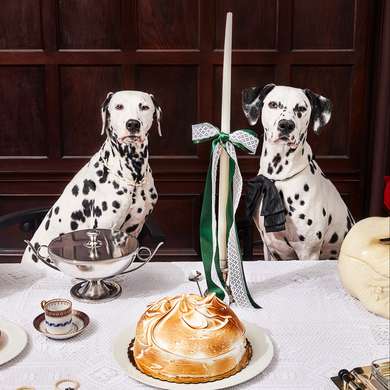There is no wrong season for good design, but the holidays give us a chance to show it off. From iconic designers Charles and Ray Eames, Alexander Girard, and Joe Colombo come their legendary creations; from Ige Design and Onora, there are modern takes on historic designs. The Eameses felt all of design was a gift, a message of hope. In that spirit, we offer the following gift ideas:

The Eames Little Toy
The Little Toy (1952), by Charles and Ray Eames, was the second generation of a toy designed for their grandchildren echoing elements used in their home in the Pacific Palisades. Originally sold through the Sears catalogue, the kit of colored triangles, squares, wire frames, and connectors has been newly reissued by the family. For the Eameses, toys revealed an elegance, authenticity, and craftsmanship that they sought in their own modern, mass-produced work. For Ray and Charles, toys embodied the core principles of design as well as a child’s lack of self-consciousness. Charles famously said, “Toys and games are not as innocent as they look. Toys and games are the preludes to serious ideas.” A new online exhibition on the Eames Institute Web site and a forthcoming print companion, “Artifacts from the Eames Collection: Toys and Play,” tells more of just how this played out.

THE CHRISTMAS TREE PAPER DRESS
Paper dresses, originally generated as advertising, emerged in the 1960s, when fashion abandoned convention. The Museum of Arts and Design recently held a show of historic examples—and I was gratified to note that two dresses I had managed to collect, a gold ruffled dress you could wear to a black-tie event and a Warhol Campbell’s Soup version, were on display. But what about today? Well, Ige’s Paper Design House has seasonal offerings in different sizes (very rare), and I can’t wait to appear in this Christmas-tree number. Made from Tyvek, a rip-, tear-, and water-resistant fabric, the lightweight dresses still permit ease of movement. What better way to show off all your new design objects?



Alexander Girard Dolls
The Alexander Girard wooden-doll collection, designed in New Mexico beginning in 1952, contains among the best-loved works in the Vitra Design Museum collection. Girard, known primarily for his textile design, also continually added to his personal collection of folkloric objects. After getting a new saw, he began to carve these dolls, which to him represented a cultural bridge. Elements of South America, Asia, and Europe found their way into the colorful, expressive creatures, which also contain influences of his commercial work for Herman Miller. (Girard also designed the interior of his friend Billy Wilder’s apartment in Los Angeles and the elegant La Fonda del Sol restaurant, in New York.)
Whimsical, patterned, gruff, and grinning, somewhere between human and animal, the dolls are symbolic of Girard’s expansive view of interiors and of life. My favorites are the mommy and the baby fish, but you will surely find your own among the 28 different solid-fir options still being issued by Vitra.
The Onora Candle
Onora is a design boutique in Mexico City dedicated to handcrafted products that contribute to the preservation of endangered artisanal traditions. That it has an impact on the lives of the craftspeople and their families is at the forefront in the minds of enlightened owners Maria Eladia Hagerman and Maggie Galton.
From Teotitlán del Valle, in Oaxaca, come these profusely decorated Onora beeswax candles, which José Hernandez creates in his workshop through a process of melting wax into molds and then painstakingly shaping the extruded wax by hand with scissors. The candles traditionally play a central role in ceremonial rituals and celebrations and seem ideal for a festive holiday table.
The Colombo Boby
Joe Colombo, a dapper Italian whose designs were prominent in the 60s and 70s, felt that antiques belonged in museums. “People who drive sports cars and wear today’s clothes—how can they live with period furnishings?” By the time he was 36, his designs were already in the collection of MoMA. I remember the cool of the all-in-one Total Furnishing Unit commissioned for “Italy: The New Domestic Landscape,” MoMA’s 1972 design extravaganza—wow, you felt hip just looking at the space that prioritized built-in everythings.
Luckily, you can still buy the Colombo Boby trolley, from 1970, produced by B-Line. Fully customizable in color and height, this is probably his most enduring piece, as useful at the bedside as it is in the office. His other designs included a cocktail glass that enabled you to hold a cigarette in the same hand, and a movable miniature kitchen. If only.
Patricia Zohn has contributed to numerous publications, including Wallpaper, Artnet, the Huffington Post, The New York Times, and the Los Angeles Times






